How Remote Climate Control Boosts Garden Productivity
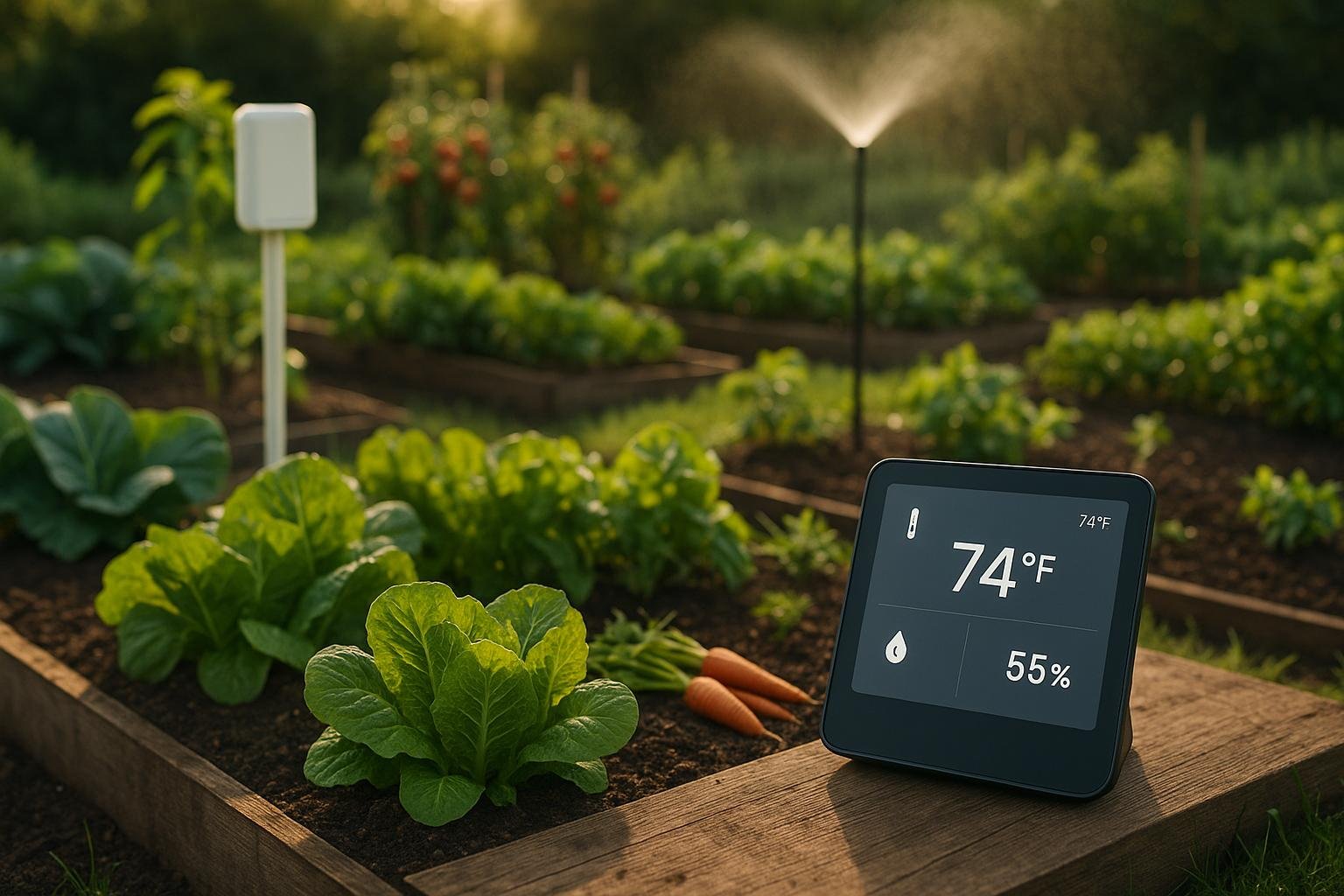
Remote climate control systems are transforming gardening by automating key tasks like temperature, humidity, and irrigation management, leading to higher yields, reduced labor, and better resource efficiency. Here’s what you need to know:
- Increased Yields: Automated systems can boost crop yields by up to 30% compared to manual methods. AI-powered setups may achieve even higher gains.
- Labor Savings: Automation reduces repetitive tasks, cutting labor costs by up to 40%.
- Resource Efficiency: Smart systems save 30–50% on water and up to 57% on energy compared to manual methods.
- Cost Considerations: Initial investment ranges from $5,000–$10,000, but long-term savings and increased productivity offset these costs.
Manual gardening methods are cheaper upfront but require constant attention and result in inconsistent yields. For small-scale gardeners, manual systems may suffice, but larger operations benefit significantly from automation. Combining both approaches can offer flexibility and efficiency.
| Criteria | Remote Climate Control | Manual Management |
|---|---|---|
| Initial Cost | $5,000–$10,000+ | Minimal |
| Yield Consistency | 92% | 70% |
| Labor Cost Savings | Up to 40% | None |
| Water Usage Reduction | 30–50% | Standard |
| Energy Efficiency | 20–25% improvement | Baseline |
| Crop Loss Prevention | Under 3% | Up to 18% |
Remote systems are ideal for gardeners seeking precision and efficiency, while manual methods suit those with smaller budgets and time to dedicate. For the best results, consider starting with basic automation and scaling up as needed.
My DIY Home Assistant Garden Automation System - Climate Control, Dosing & More. Pt.2: Functionality

1. Remote Climate Control Systems
Remote climate control systems use advanced sensors and smart controllers to continuously manage temperature, humidity, lighting, and irrigation. This ensures optimal growing conditions, leading to better productivity, reduced labor needs, and lower operational costs.
Productivity/Yield
Smart gardens can increase yields by as much as 80%, with AI-powered vertical gardens producing up to 10 times more per square foot compared to traditional setups [3][4]. For instance, systems like Climate Manager oversee vents, shading, lighting, misting, temperature, and humidity to create a stable environment that promotes healthy crops and maximizes productivity [5].
Labor and Time Savings
Automated climate control systems take over repetitive tasks, such as monitoring nutrient levels, pH, and water levels, freeing staff to focus on planting and harvesting. Dave Stoltzfus, president of Advancing Alternatives, highlights this advantage:
"Our systems reduce the need for on-site monitoring, allowing staff to focus on high-value tasks like planting and harvesting. AdvanSync provides peace of mind with weather-based overrides and remote control features, making it easier to manage operations even with limited personnel." [7]
With labor costs increasing 3–5% annually, automating environmental controls has become a necessity. These systems allow growers to manage every aspect of the growing process through a single, programmable controller [6].
Resource Efficiency
These systems also help conserve resources by cutting water usage by 30–50% and reducing energy consumption by up to 57% compared to traditional methods [4][10]. Features like advanced scheduling and dimming ensure plants receive just the right amount of light at each growth stage, eliminating waste [5][11]. As Priva explains:
"With automated greenhouse processes, energy is used as efficiently as possible due to intelligent predictions of conditions." [9]
Additionally, precise feed control can save growers around 30% on water costs and 40% on fertilizer expenses annually [8].
Cost
While the initial investment in these systems can be substantial, the long-term economic benefits are clear. By lowering labor, resource, and energy expenses while increasing yields, these systems prove to be a smart financial choice [6]. For example, the Climate Manager helps reduce heating and cooling costs by providing full environmental control [5]. When paired with natural ventilation and smart automation, these solutions offer significant savings compared to traditional fan-based methods [7]. In an era of unpredictable weather patterns, these cost efficiencies help growers stay competitive and adaptable.
2. Manual Garden Climate Management
Manual garden management represents a more hands-on, traditional approach compared to automated systems. It relies heavily on the gardener's daily involvement to maintain proper growing conditions. This includes tasks like monitoring, watering, adjusting light exposure, and ensuring plants get the nutrients they need. While this method can be rewarding, it presents challenges in maintaining consistency and efficiency, especially when compared to automation.
Productivity/Yield
One of the biggest hurdles for manual systems is consistency, which directly impacts productivity. A 2024 survey of 350 European greenhouses revealed that manual systems did not show any improvement in yield, while basic automation led to a 15% increase [1].
Manual management often results in unpredictable yields. For example, herb yields fluctuated by as much as 15%, while tomato crops saw a significant jump - going from 45 kg/m² (about 9.2 lb/ft²) to 58 kg/m² (roughly 11.9 lb/ft²) - when automated systems were introduced [1].
Human error also plays a major role in these inconsistencies. At a UK cucumber farm, poor manual watering schedules caused up to 18% crop loss. After switching to basic automated irrigation, losses dropped to under 3% [1]. Similarly, a Belgian lettuce farm experienced a 20% drop in crop uniformity due to irregular manual irrigation [1].
Labor and Time Savings
Managing a garden manually is labor-intensive and demands constant attention. Key tasks like harvesting account for 31% of total gardening time, with irrigation taking up another 20%, and weeding and pruning adding 8% [13].
Labor needs vary by crop type. For instance, cucumber and pepper crops require 19% and 32% less labor, respectively, than tomatoes [12]. Tomato farming, in particular, can be time-consuming, with labor demands ranging from 12 hours per 10,000 ft² at the start of the season to as much as 37 hours per 10,000 ft² during peak production [12].
Agronomist Régis Larouche explains how tasks are measured in terms of efficiency:
"The crops need to be kept at a consistent height. Most tasks are carried out weekly and the targets are usually expressed as minutes per 100 plants or as pounds per square foot for picking." [12]
Long-season tomato crops can require 15 to 20 hours per m² annually (approximately 1.4 to 1.9 hours per ft²). On average, manual gardens demand 14 minutes of labor per m² every 30 days (around 1.3 minutes per ft²) [12][13].
Resource Efficiency
Manual systems often struggle with efficient resource use, particularly when it comes to watering and climate control. Inconsistent application is a common problem. For instance, gardens typically receive a median of 20 L/m² of irrigation over 30 days (about 5.3 gallons/m² or 0.5 gallons per ft²), while vegetable-only areas average 52 L/m² (approximately 13.8 gallons/m² or 1.3 gallons per ft²) during the same period [13].
Water use efficiency (WUE), which measures how effectively water is converted into harvestable yield, remains a challenge for manual systems. Natural rainfall can account for anywhere from 4% to 94% of a garden's total water intake, depending on location and climate [13].
Timing is another issue. A Polish flower grower, for example, struggled to keep up with temperature adjustments during a heatwave, leading to a 15% loss in flower quality [1].
Cost
While manual management might seem like a cheaper option upfront, hidden costs can quickly add up. Inefficiencies in resource use and labor requirements drive up operational expenses. For example, municipal water costs can range from 3% to 90% of total garden expenses [13]. Labor is another major factor - manual systems require full staffing throughout the growing season, with labor demands averaging 14 minutes per m² every 30 days (around 1.3 minutes per ft²) [13].
The financial impact extends beyond direct costs. Lower yields and inconsistencies in production can significantly affect profitability. Manual systems typically achieve about 70% consistency in crop yields, compared to 92% for automated systems [1].
| Management Type | Average Yield Increase (%) | Labor Cost Savings (%) | Water Usage Reduction (%) |
|---|---|---|---|
| Fully Manual | 0% | 0% | 0% |
| Basic Automation | 15% | 20% | 18% |
| Advanced Automation | 30% | 40% | 25% |
These challenges highlight why many gardeners are increasingly turning to automated solutions to improve efficiency and profitability.
sbb-itb-4d6a8dd
🚀 Ready to Reinvent Your Garden?
Join thousands of homeowners who have transformed their gardens using our AI design tool. Upload one photo to explore endless possibilities.
Get your AI garden designs →Pros and Cons
After examining yield, labor, and resource data, let’s weigh the pros and cons of remote systems versus manual methods. Each approach comes with its own set of trade-offs, and understanding these can help gardeners make informed decisions based on their goals and budgets.
Remote climate control systems shine when it comes to precision and efficiency. They provide continuous monitoring, reducing human error and optimizing conditions. For example, a cucumber grower in the Netherlands saw a 27% yield increase and a 35% reduction in labor costs by fully automating their operations[1]. Farms using AI-driven climate control have also reported a 22% decrease in crop losses due to disease[1].
However, these systems come with a hefty price tag. A complete smart HVAC system, including sensors and controllers, costs between $5,000 and $10,000, with installation adding another $1,500 to $3,000[15]. Basic automation setups for smaller farms start around $10,000[1], and annual maintenance costs typically range from $150 to $300[15].
On the other hand, manual management offers affordability and flexibility. It allows gardeners to directly oversee and adapt to unexpected conditions, making it particularly useful for smaller or experimental operations. But it’s labor-intensive and more prone to human error, which can impact consistency. When comparing reliability, manual methods deliver lower yield consistency than automated systems, achieving only a 70% consistency rate versus 92% for automated setups[1].
Here’s a quick comparison:
| Criteria | Remote Climate Control | Manual Management |
|---|---|---|
| Initial Investment | $5,000–$10,000+ setup costs | Minimal upfront costs |
| Yield Consistency | 92% consistency rate | 70% consistency rate |
| Labor Cost Savings | Up to 40% reduction | None |
| Water Usage Efficiency | 25–30% reduction | Standard consumption |
| Energy Efficiency | 20–25% improvement | Baseline usage |
| Crop Loss Prevention | Under 3% losses | Up to 18% losses |
| Adaptability | Optimized for routine conditions, less flexible in unexpected situations | Highly adaptable |
A hybrid approach often delivers the best of both worlds. For instance, a Spanish pepper farm that combined robotic pruning with climate automation saw a 40% improvement in quality standards[1].
John Peck, CEO of GreenAgro Ltd, highlights the potential:
"Our clients report up to 25% yield increases after integrating automated nutrient and climate controls. It's like turning the greenhouse into a 'living machine,' continuously optimizing itself."[1]
Ultimately, the choice between automation and manual methods depends on the scale and objectives of the operation. Larger farms benefit from automation’s efficiency and labor savings, with return on investment typically achieved within 2 to 5 years[7]. Smaller gardens, however, may find manual management more cost-effective and personally rewarding. A balanced mix of remote systems and manual techniques can cater to diverse needs, reinforcing the productivity advantages discussed earlier.
These findings pave the way for exploring practical applications and AI integration in the next section.
Practical Results and AI Tool Integration
Examples from real-world applications show that combining remote climate control systems with AI-driven tools can lead to noticeable productivity gains. Compared to manual approaches, these integrations highlight the advantages of consistency and efficiency offered by modern technology.
Greenhouse Operations Benefit from Improved Systems
Take the case of a vegetable greenhouse that struggled with uneven plant growth due to fluctuating temperature and humidity. By installing centrifugal fans, they improved air circulation, balanced heat and moisture levels, and achieved more uniform plant growth, resulting in higher yields[2].
Similarly, an organic herb greenhouse faced recurring fungal issues caused by stagnant air and excessive humidity. Adding centrifugal fans to maintain steady airflow significantly reduced disease outbreaks, leading to healthier plants, fewer losses, and better profitability[2].
A flower greenhouse focusing on premium blooms saw a boost in growth rates and bloom quality by enhancing CO₂ distribution. Fans ensured that CO₂ from enrichment systems was evenly spread throughout the greenhouse, leading to more vibrant flowers and increased production capacity[2].
These hardware upgrades laid the groundwork for incorporating AI, which further fine-tuned system performance.
Handling Extreme Weather with Climate Control
A tropical greenhouse in Florida faced challenges in maintaining stable internal conditions during extreme weather. By deploying centrifugal fans, they managed to keep temperatures and humidity levels consistent, ensuring plant survival and continuous growth even under adverse conditions[2].
AI Integration: Taking Efficiency to the Next Level
With AI in the mix, these systems achieve even better results. For instance, AI-powered smart irrigation systems can cut water usage by up to 50% while increasing yields by 30%. These systems operate with an efficiency of 85–95%, far surpassing the 60–70% efficiency of traditional methods[17].
AI algorithms use sensor data, weather forecasts, and historical crop information to predict irrigation needs. They adjust in real time to conserve water and protect crops from over- or under-watering[17].
Smarter Resource Management with AI
Integrated systems powered by AI can increase crop production by as much as 30% while reducing water, fertilizer, and labor requirements by 30–50%[14]. Smart irrigation also improves crop uniformity by 15%[14]. Additionally, AI-controlled red-blue LED lighting systems boost photosynthesis, leading to a 10–20% increase in yields for crops like tomatoes[14].
AIGardenPlanner: A Tailored Approach
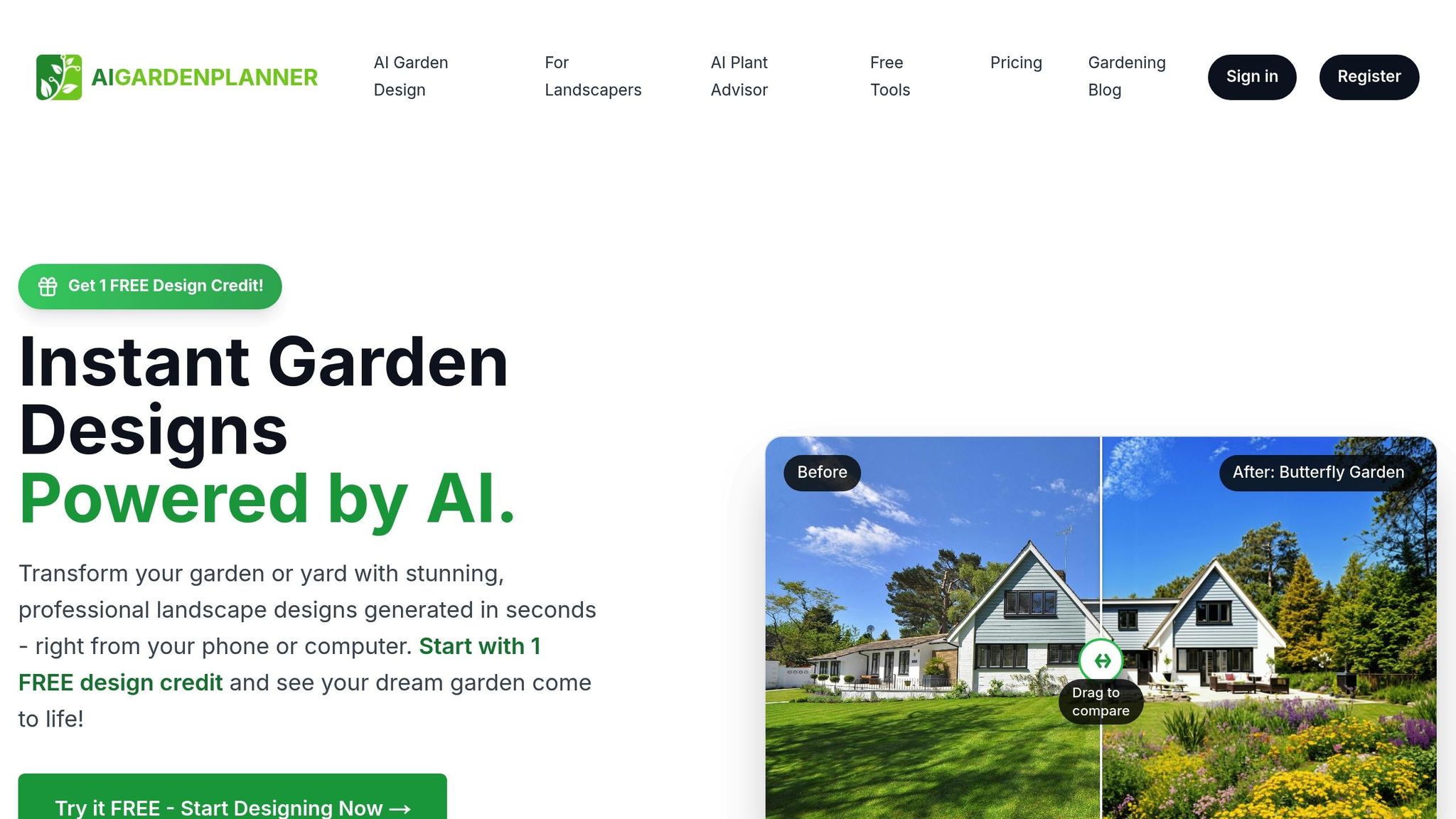
When paired with remote climate control systems, tools like AIGardenPlanner offer even more possibilities. This platform analyzes garden photos and uses location-based data to recommend the best plant selections for specific environments. By aligning plant choices with optimized climate settings, gardeners can maximize both efficiency and productivity. Detailed growing guides provided by the platform further enhance results, helping users understand how different plants respond to climate adjustments.
"AI is being applied in agriculture with the aim of improving the efficiency, productivity and sustainability of food production." - J. Huete Greenhouses [16]
Long-Term Benefits of Integration
Greenhouses that combine remote climate control with AI-powered management consistently report long-term improvements. Smart systems reduce energy consumption by 20–25% compared to manual methods[14], all while maintaining precise environmental settings year-round. For example, hydroponic smart greenhouses can produce up to 10 times more lettuce per square meter than traditional soil-based farming[14].
Conclusion
Remote climate control systems have transformed the way U.S. gardeners approach productivity. These advanced tools allow for precise management of temperature, humidity, CO₂ levels, and airflow - capabilities that go far beyond what manual methods can achieve. With AI-powered climate control, energy use can drop by up to 30%, while yield increases, and smart irrigation systems can reduce water consumption by 30–50% [18].
When considering these systems, gardeners should weigh factors like scale, budget, and long-term goals. For those aiming to maximize efficiency, more advanced setups with wireless operation, mobile app integration, and data tracking are worth exploring. These features not only streamline operations but also lay the groundwork for incorporating smarter AI-driven solutions.
"You're bringing the best of nature into an environment, and removing threats [such as] extreme weather, pests, and soil contamination. Compared to traditional farms, this method is safer, more consistent, [and more] versatile in what we can grow, how often we can grow, and how often we harvest. CEA is more precise and exact on how we help plants grow, resulting in healthier, better tasting produce." - Aaron Fields, Head of Horticulture, Eden Green Technology [19]
For gardeners on a tighter budget, starting small with basic automated ventilation systems is a practical first step. Over time, they can add sensors and smart controls to build a more advanced setup. On the other hand, larger-scale or commercial growers should consider fully integrated systems that combine multiple environmental controls. While the initial investment may seem steep, the benefits - such as improved crop consistency, lower labor costs, and year-round production - quickly outweigh the costs.
Pairing these systems with AI tools like AIGardenPlanner takes optimization even further. By analyzing climate data specific to your location and offering tailored growing advice, such platforms help ensure that your investment in climate control aligns perfectly with the needs of your plants.
From Minnesota's freezing winters to Florida's sweltering summers, remote climate control systems provide the precision and consistency that modern gardening demands. The real question for most U.S. gardeners isn't whether to adopt these systems, but how to choose the right level of automation to suit their goals and budget. These tools represent the future of gardening - one where every plant thrives in its ideal environment.
FAQs
Is the upfront cost of a remote climate control system worth the long-term savings and benefits?
While setting up a remote climate control system might cost more initially compared to traditional options, the long-term advantages can make it well worth the investment. These systems can help cut energy bills by 8–10%, reduce maintenance expenses, and even extend the life of your garden equipment by keeping conditions just right.
In the long run, saving on utilities and avoiding frequent repairs makes remote climate control a practical choice for improving your garden's efficiency and productivity.
How does AI improve the efficiency of remote climate control systems in gardening?
AI is transforming remote climate control systems by taking over the heavy lifting of monitoring and fine-tuning factors like temperature, humidity, and light. This means plants can thrive in ideal conditions without gardeners needing to step in constantly to make manual adjustments.
With the ability to analyze real-time data, AI doesn’t just react - it anticipates. It can predict shifts in weather or indoor conditions and make the necessary tweaks to keep the environment stable. The result? Healthier plants, less wasted energy, and more time for gardeners to focus on other priorities.
For those wanting to integrate smarter tools into their gardening routine, platforms like AIGardenPlanner are a great match. They go beyond climate control by offering tailored plant suggestions and design advice based on specific climates and personal preferences.
What’s the best way for small-scale gardeners on a budget to start using remote climate control systems?
For gardeners working with a tight budget, keeping things simple is the way to go. Affordable tools like basic temperature controllers or easy-to-use plug-and-play systems are a great starting point. These gadgets often include temperature and humidity sensors and can be paired with mobile apps, giving you the ability to monitor and adjust your garden's environment from anywhere.
As you have more funds to invest, you can step up to advanced options like smart irrigation systems or setups with multiple sensors. These tools take the guesswork out of gardening by maintaining optimal conditions for your plants, even when you're not around. Starting with the essentials and upgrading over time allows you to improve your garden without breaking the bank.
🎨 Visualize Your Dream Garden Today!
Transform any outdoor space into a professional landscape design in minutes. Just upload a photo, choose your style, and let our AI do the rest.
Start your garden transformation now →Related posts
Related Articles

Transform Your Garden with These Top Garden Visualizer Tools
Discover the benefits of using garden visualizers to plan, design, and visualize your dream garden. Explore key features, tips for designing, and the future of garden visualization technology.

How AI Soil Sensors Monitor Moisture and Nutrients
Explore how AI soil sensors enhance farming efficiency by monitoring moisture and nutrients, optimizing irrigation, and boosting crop yields.
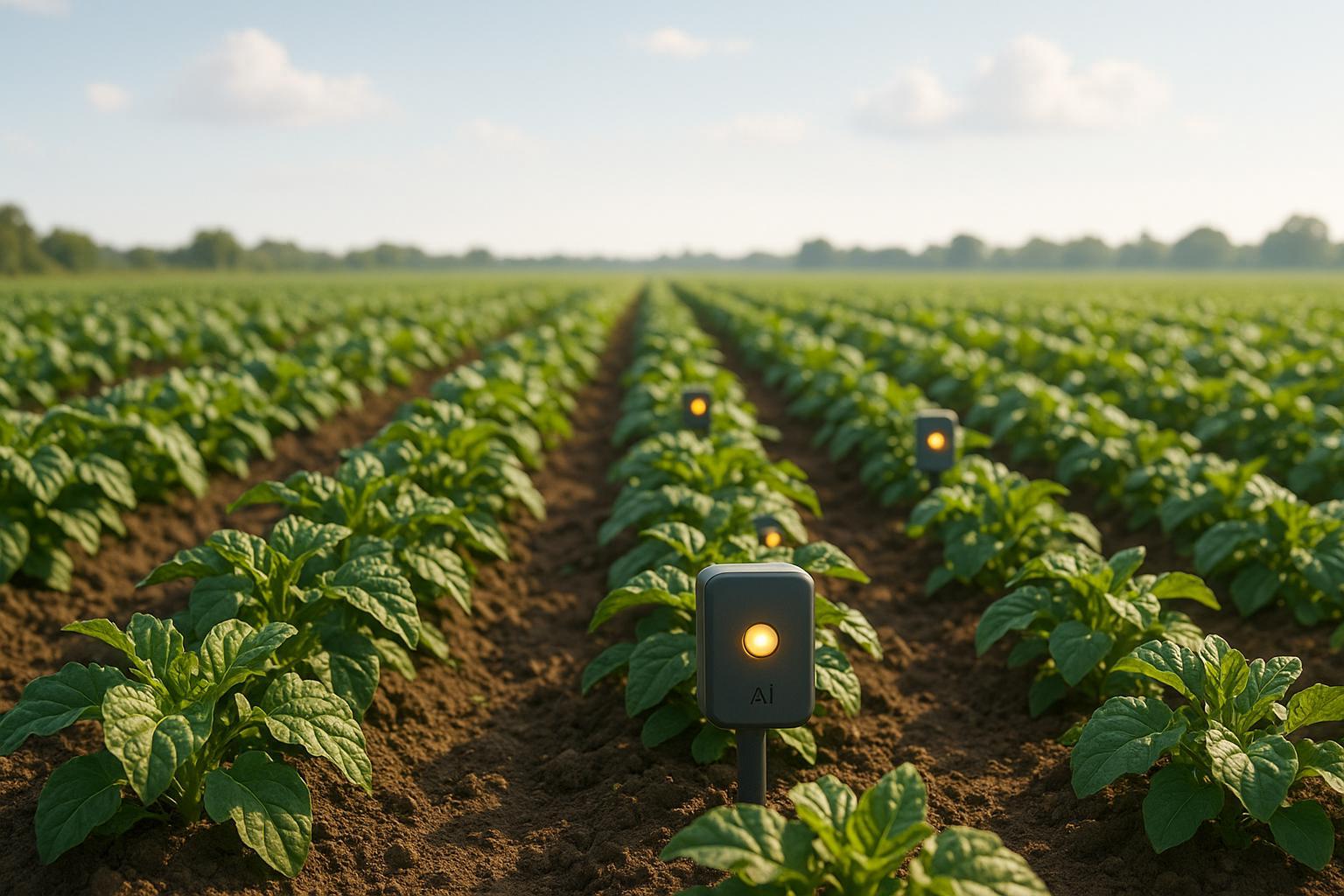
How AI Sensors Improve Seasonal Plant Monitoring
Explore how AI sensors revolutionize plant monitoring, enhancing resource efficiency, boosting yields, and enabling early disease detection.
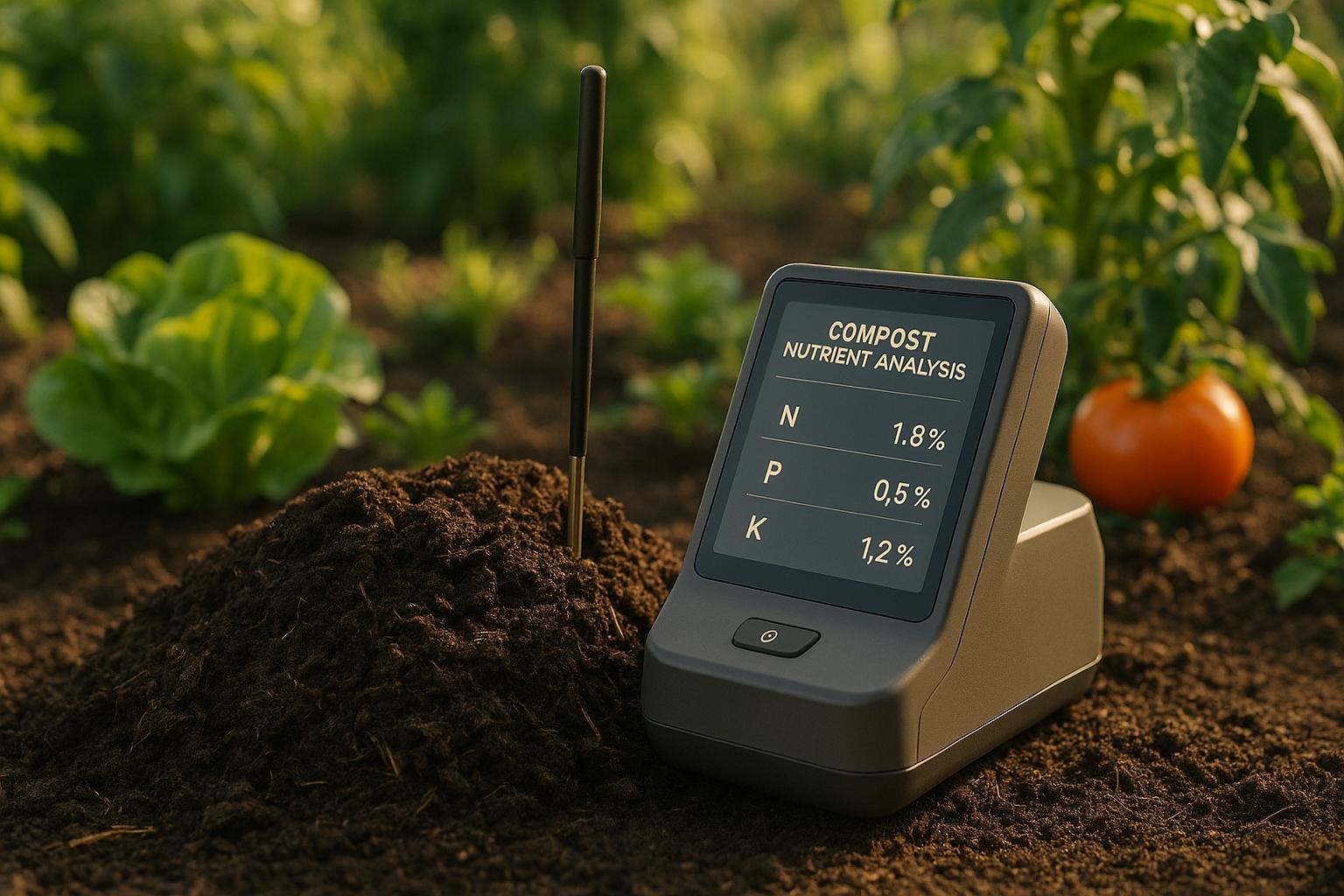
AI Tools for Compost Nutrient Analysis
Explore AI tools that enhance compost nutrient analysis, offering faster, accurate insights for gardeners and farmers at all levels.
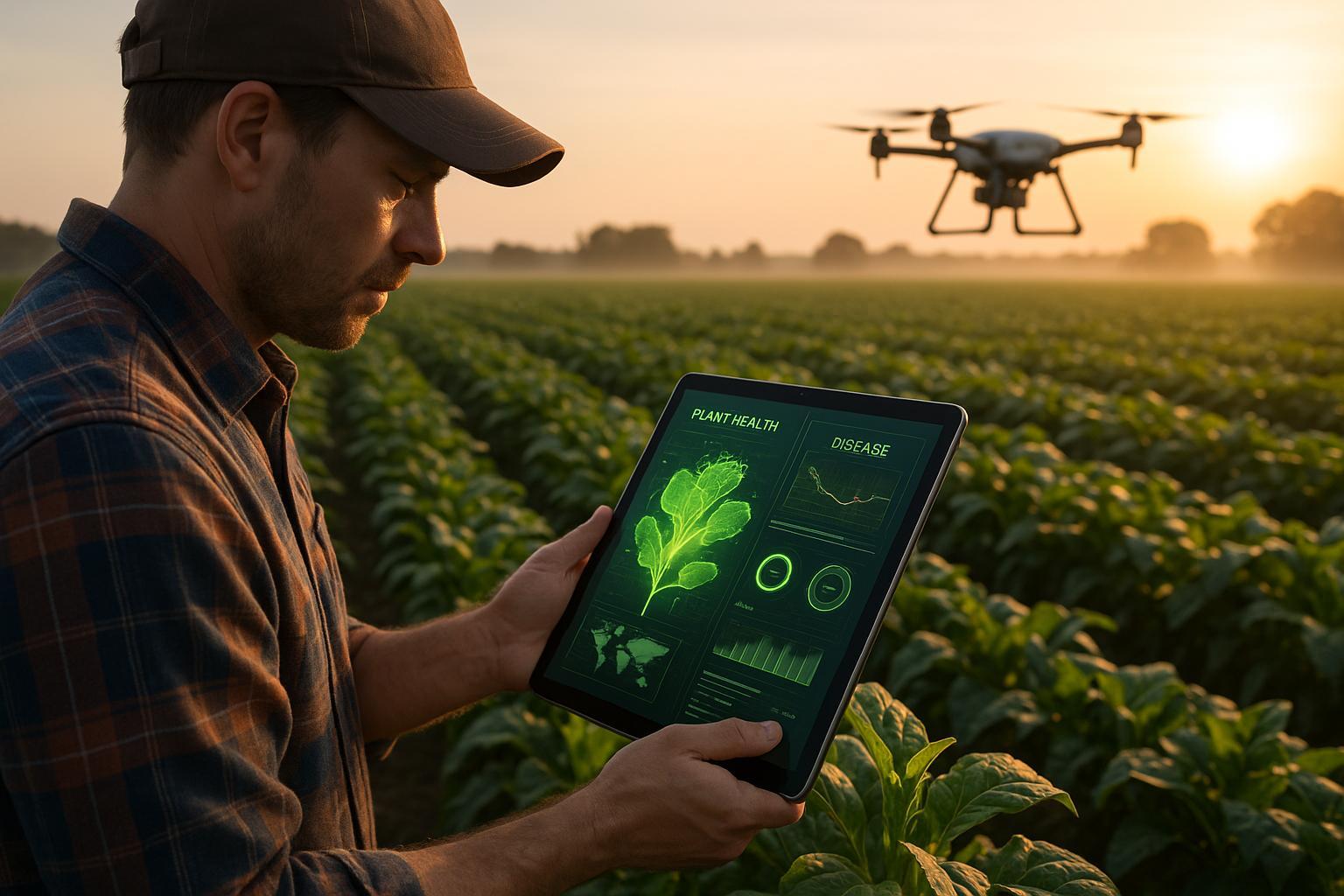
AI Tools for Predicting Plant Disease Outbreaks
AI tools are revolutionizing crop protection by predicting plant diseases accurately and helping farmers increase yields while minimizing pesticide use.
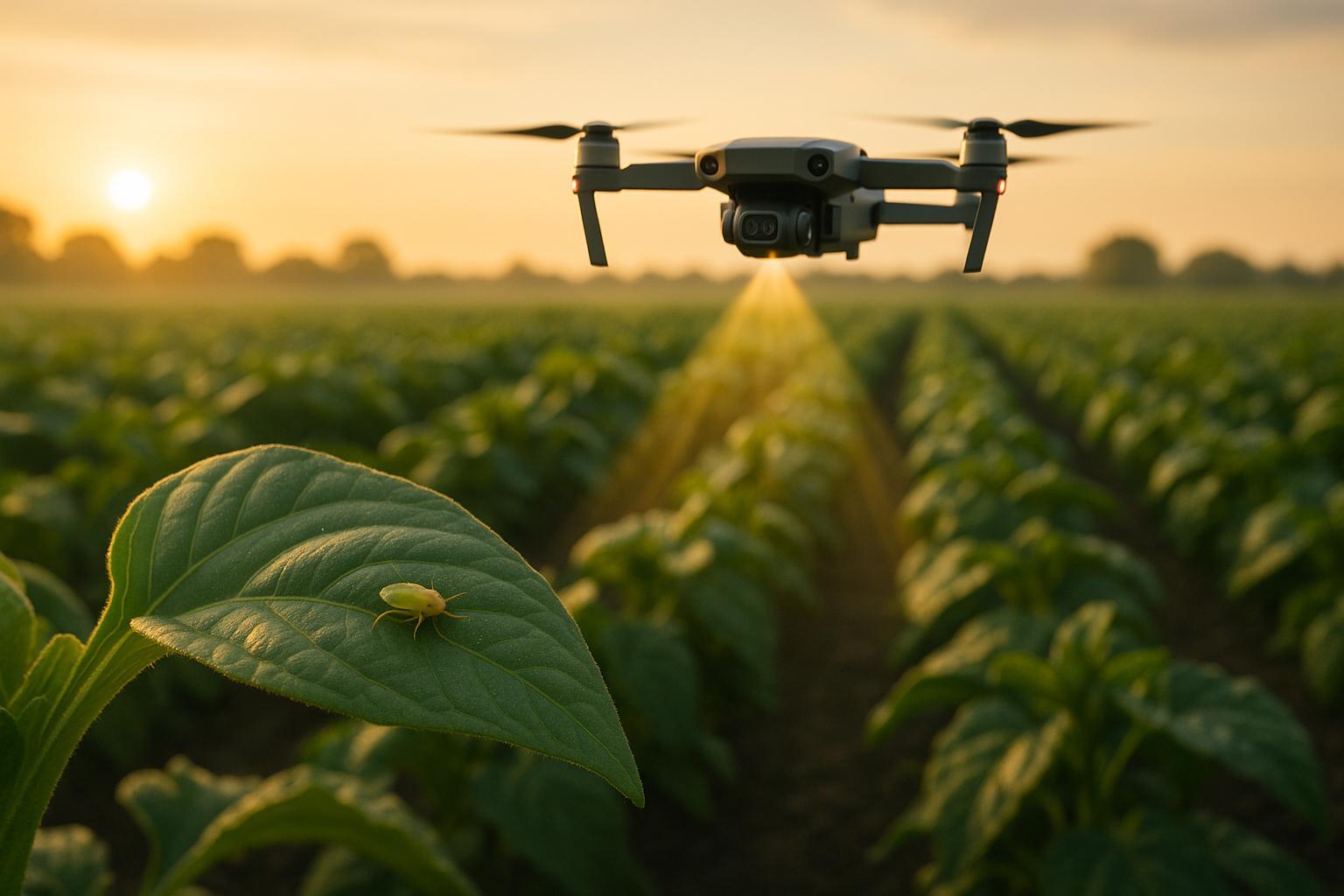
How Machine Learning Tracks Pest Behavior
Explore how machine learning revolutionizes pest management through early detection, precision treatment, and real-time monitoring, enhancing agricultural efficiency.